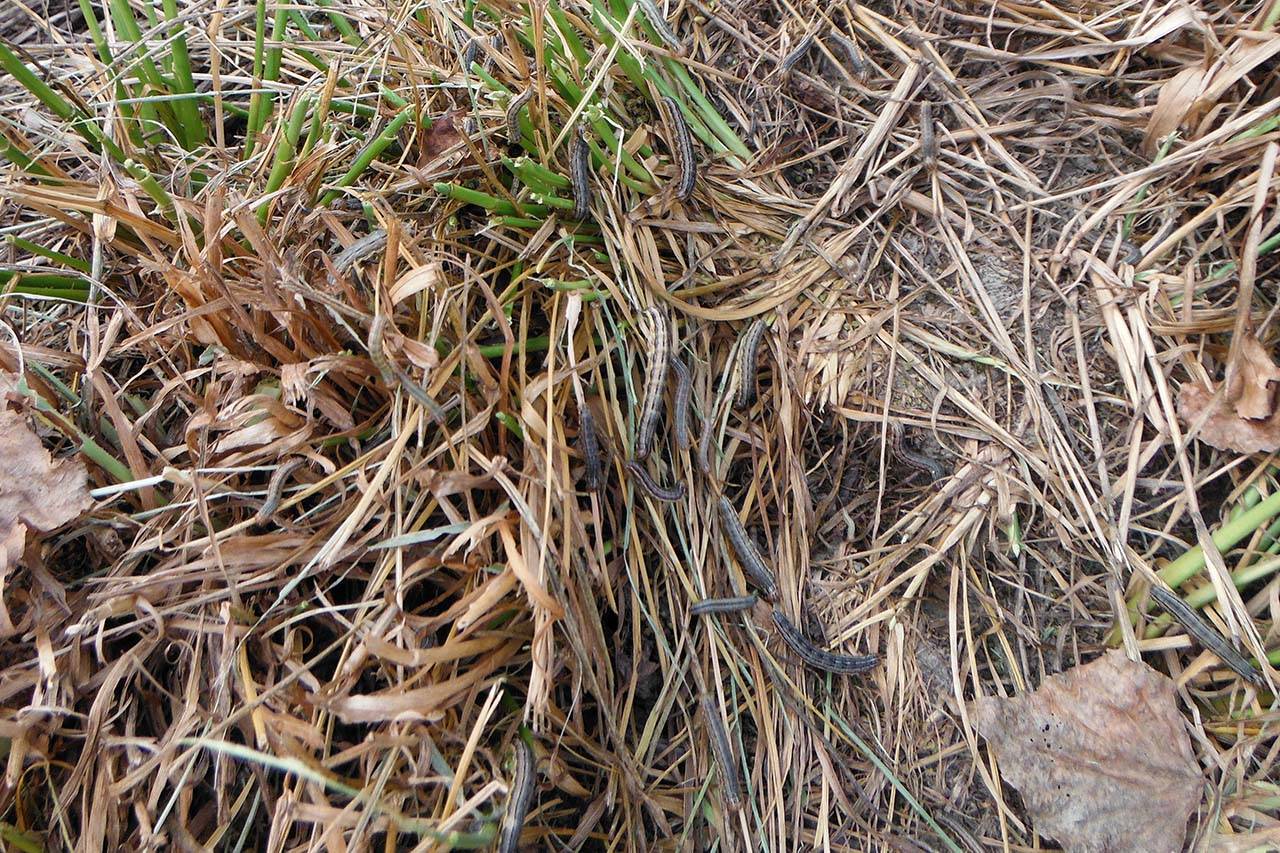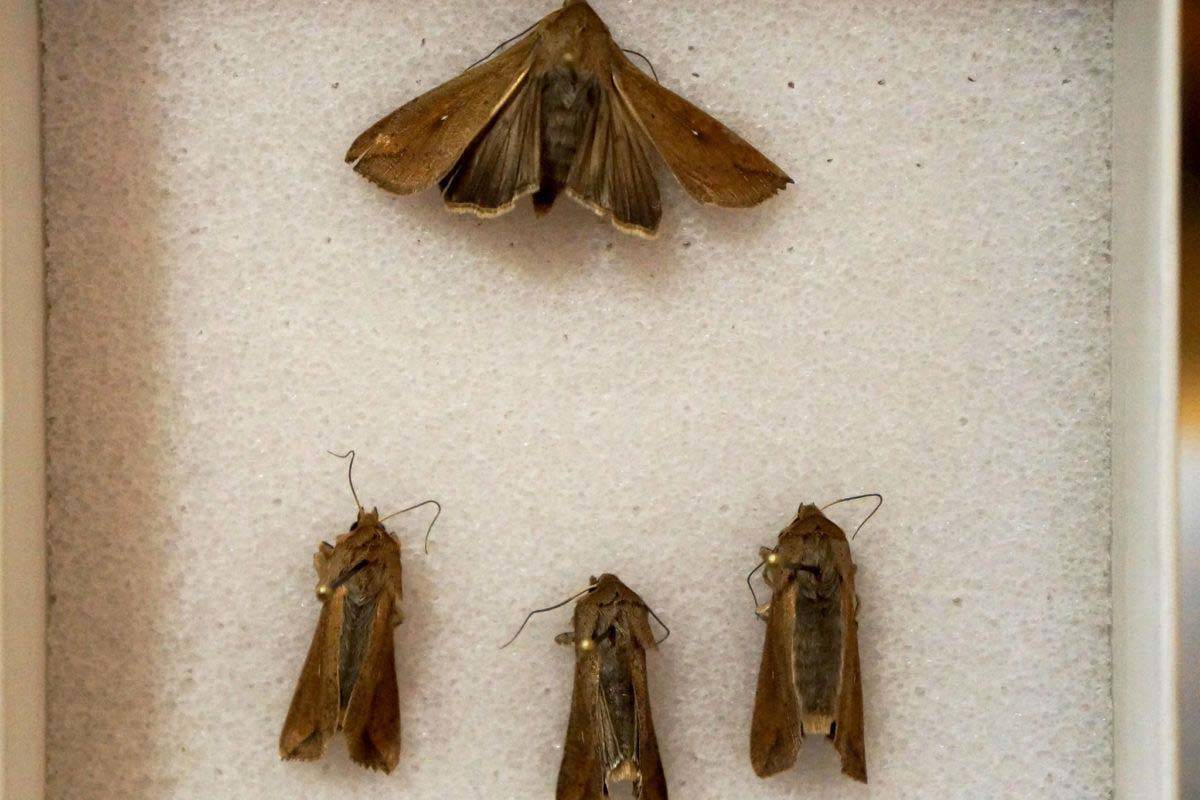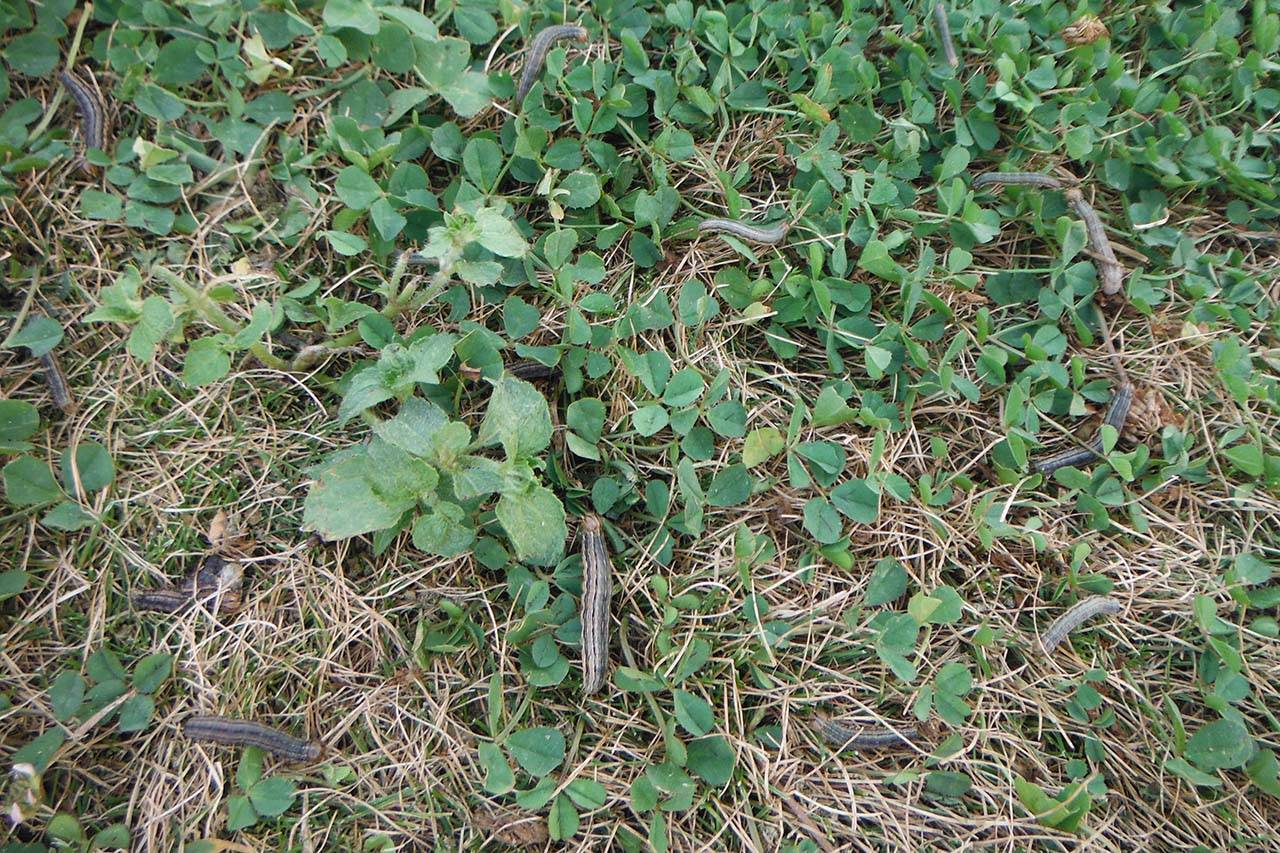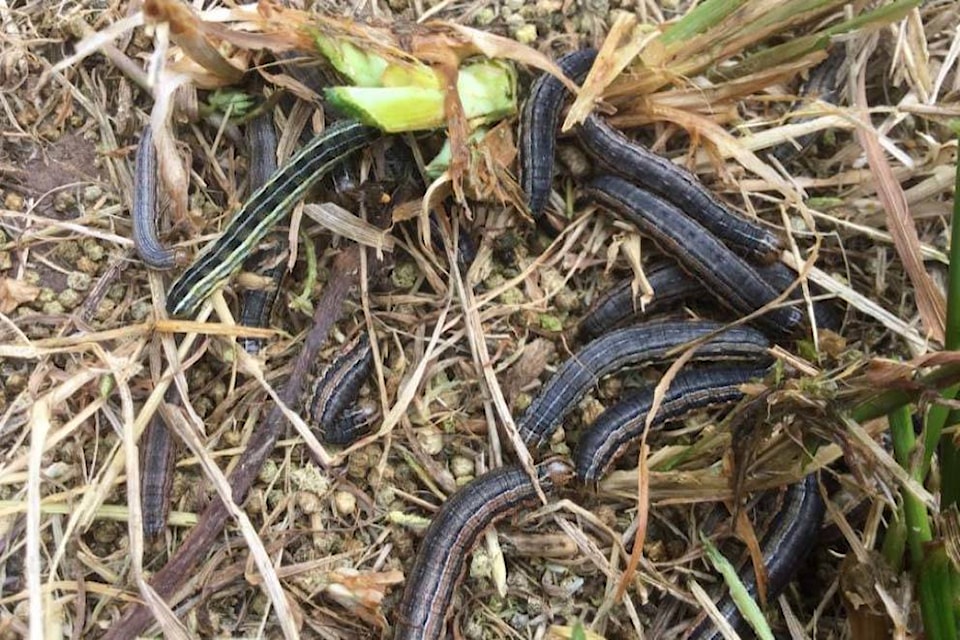They are small. They are slimy. And they eat through crops like a military force on a mission.
Armyworms have arrived in the Fraser Valley.
Common armyworm (or true armyworm) is the larval stage of the moth Mythimna unipuncta. The worms were first discovered in B.C. on Vancouver Island in the summer, but in recent weeks some farmers have found them in the Fraser Valley from Delta to Chilliwack.
READ: Rare armyworm making its way onto Island farms
Armyworms are voracious eaters with a particular penchant for hay and corn, something that could be a problem in the Fraser Valley given the proliferation of those two crops.
“Ugly as heck,” is how Tom Baumann describes the worms. Baumann is an associate professor in the agriculture department at the University of the Fraser Valley (UFV).
“We do have them. I saw that first hand. We are trying not to point fingers and at this point have no idea why the outbreak. Agriculture and Agri-Food Canada are involved and I believe the Canadian Food Inspection Agency has also been contacted.”
Baumann said it’s the first time armyworms have been found in the Fraser Valley.
“They are eating everything in their path, mostly grass,” he said.
As recently as a month ago, an expert on the subject told farmers on Vancouver Island that the worms hadn’t made it to the mainland.
READ: Armyworm infestation monitored with traps in Valley
“We don’t have armyworms in the Fraser Valley, we haven’t seen this happen to our hay fields so it seems to be fairly limited to this area of Vancouver Island,” B.C. Ministry of Agriculture entomologist Tracy Hueppelsheuser said just over a month ago.
Abbotsford-based Hueppelsheuser was in the Port Alberni area in July talking to farmers and setting pheromone traps on farms to monitor the lifecycle of the moths.
“[Armyworms] actually blow in from Mexico or the southern United States on wind in April or May and then the moths drop out of the clouds and find a nice lush patch of grass and lay a ton of eggs,” Hueppelsheuser said. “It’s a little bit of a roll of the dice to know where they’re going to land.”
Neil Turner, who along with Arzeena Hamir, own Amara Farm in Port Alberni, an organically-run farm selling garlic and winter vegetables, said the infestation of armyworms is “very freaky.”
He said while farmers shouldn’t panic, there is cause for concern.
“When you walk across the hay field, you can hear a ‘pop, pop’ sound with every step.”
Armyworms, common to Manitoba but very rare in B.C., have not yet caused a lot of damage to crops in the Alberni Valley, explained Turner, but have made their way into the Port Alberni area, with several farmers reporting destruction of hay fields.
According to Manitoba Agriculture, armyworms feed on oats, wheat, fall rye, barley, forage grasses and field and sweet corn. Adults are moths that do not overwinter in the province, but move in from the south, and in some years can get to levels that can cause economic damage to crops.
To identify armyworm moths, Hueppelsheuser said they have a white dot on each of their wings.
- with files from the Alberni Valley News
@PeeJayAitch
paul.henderson@theprogress.com
Like us on Facebook and follow us on Twitter.



